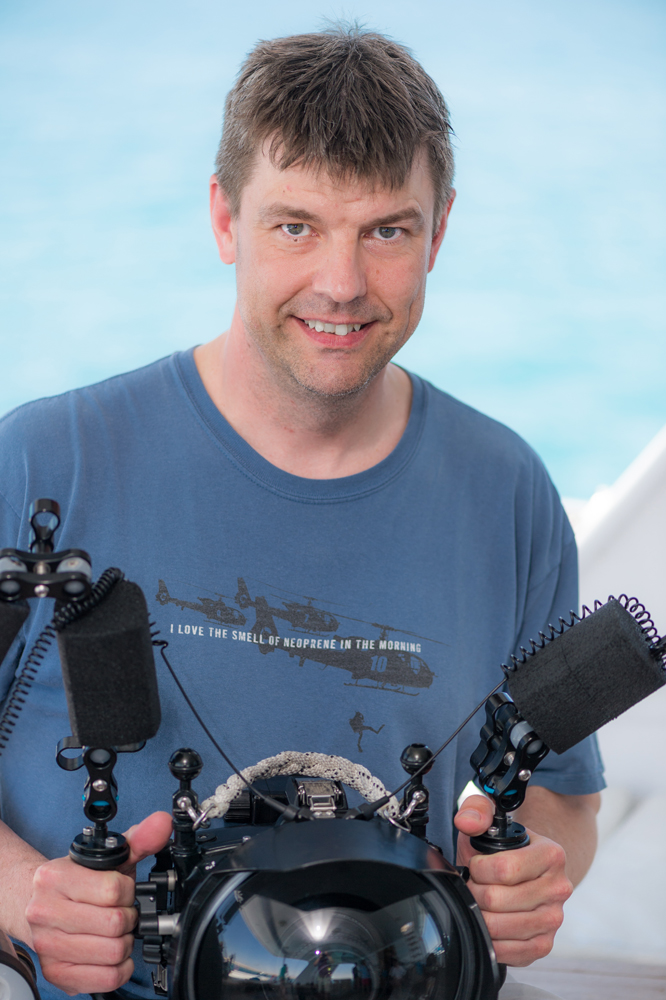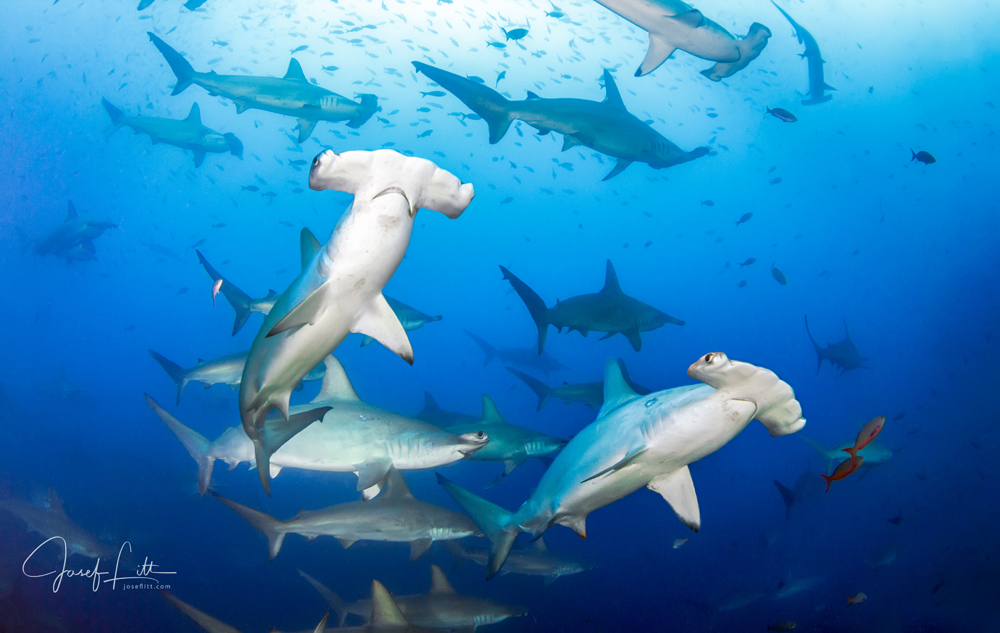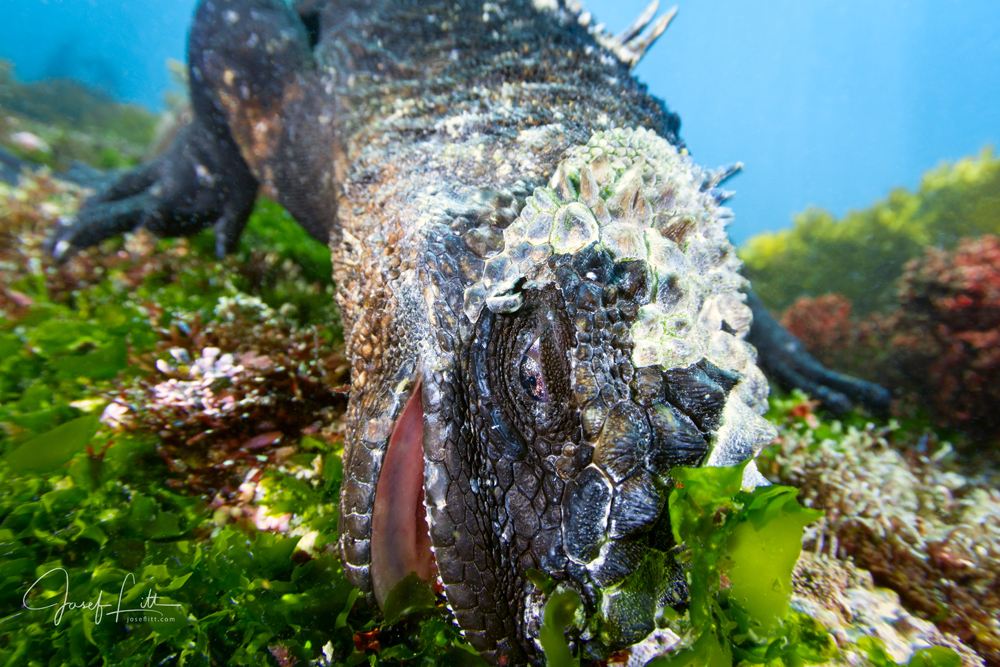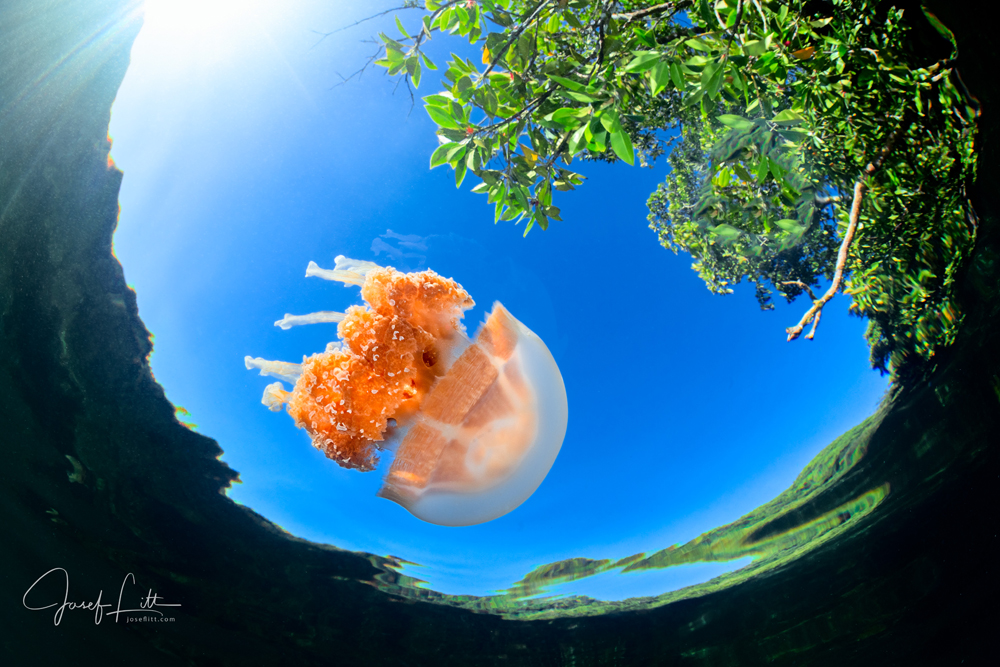News
Scubaverse Underwater Photographer Interview: Josef Litt
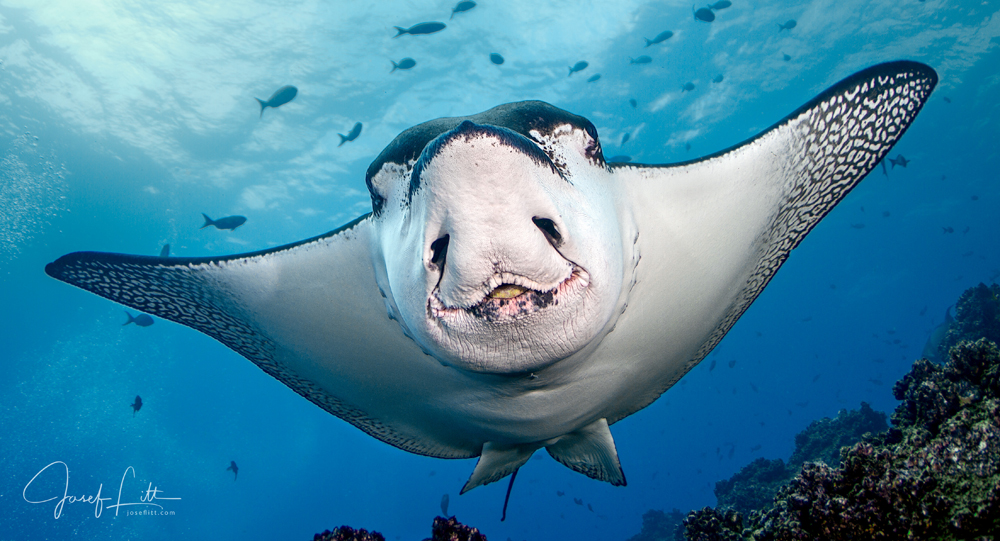
In an ongoing series, Scubaverse’s Underwater Photography Editor Nick Robertson-Brown talks to underwater photographers from around the world that he admires. In this blog: Josef Litt.
I grew up in Czechoslovakia, and we now live with my family in a small town called Twyford, west of London. I dreamt of adventures in faraway lands and in the ocean since I was a little boy, although my interest in technology took over in my early teenage years. Computers became the subject of my studies and later occupation. However, the romance with adventure and nature grew stronger and stronger. The decision to go diving was inspired by my dad becoming a diver in the local army organisation in the late 1970s.
‘Build a house, father a child, become a diver.’
I managed these goals and also planted some trees in 2006. The decisive moment arrived when I brought a borrowed Canon S90 in an underwater housing to my second diving trip. The photos were dreadful, but the bug has bitten.
I like photography, but I love the stories and the adventure more. Which explains why I’d rather write an article than prepare images for competition. Winning is a great feeling but so is to see an article published in a magazine with a photo on the cover page. The most rewarding feeling though was to receive fantastic reviews of my book GALÁPAGOS from readers and magazine editors.
Nowadays I enjoy leading trips to the Galapagos and other destinations, taking photographs, writing articles and working on my next book. Juggling this, family life and my work as a business transformation consultant keeps me busy every minute.
My website www.joseflitt.com covers all about the trips, GALÁPAGOS and my photography. Follow me on Facebook (Josef Litt and Photography by Josef Litt) and on Instagram (@jlittphoto).
Check out the 2020 Galapagos trips on Scuba Travel’s website by clicking here.
NRB: What is your favourite u/w camera equipment (past & present) & why?
JL: The first camera I ever used underwater was a Canon, and I stayed faithful ever since. I own a Canon 5D Mark IV in Nauticam housing, and I am loving it. The dynamic range and the low noise of the sensor allow me to take pictures in difficult lighting situations. The ergonomics of the housing is impressive. I feel I have everything I need at my fingertips.
NRB: What would be your advice to anyone new to underwater photography?
JL: Firstly, have fun! Learn as much as you can, read about photography, book an underwater photography workshop. Bite the bullet and learn Adobe Lightroom and Photoshop properly. Your ability to develop underwater images is as important as the ability to take them.
NRB: What, or who, has been your single biggest inspiration for your underwater photography?
JL: The word ‘single’ in the question puzzles me. The natural history TV series featuring the underwater world formed my interest. But there was no such a thing as a single biggest inspiration. I am privileged to have a chance to learn from the grandmasters: Martin Edge and Alex Mustard, and also be part of an awesome community of underwater photographers around the world.
NRB: Where is your favourite dive location, and is it for the photography?
JL: My most favourite dive locations are in the Galapagos. Darwin and Wolf are fantastic dive sites. Diving with marine iguanas at Cabo Douglas on Fernandina is also an unforgettable experience. Galapagos is not an easy location to take photographs, but results can be stunning with perseverance and careful lighting techniques.
NRB: What are you views on marine life manipulation, moving subjects?
JL: I am against harassing marine life. One could say that the act of flying to exotic destinations has a much more significant impact than moving a candy crab to the top of the soft coral. Also, one flash may not harm a pygmy seahorse but a queue of keen photographers taking ten or more shots each probably will. A healthy respect for the environment and the creatures living in it is critical. Awarding a manipulated image means blacklisting the competition for me.
NRB: What do you look for when you are making your images?
JL: I look for the background, the decisive moment, composition, play of light and an interesting foreground subject. I am usually pleased with clean, uncluttered images.
NRB: What motivates you to take u/w photos?
JL: It is the desire to illustrate the stories about a place, an animal or an event with a view from another angle. Same reason why I enjoy taking split photographs and taking images with a drone.
NRB: If you could photograph any one thing/place what or where would that be?
JL: A gathering of whales. If I were limited to a single place, I would stay in the Galapagos.
To see more of Josef Litt’s work click here.
Blogs
Heading out on the water this Summer? Watch for manatees
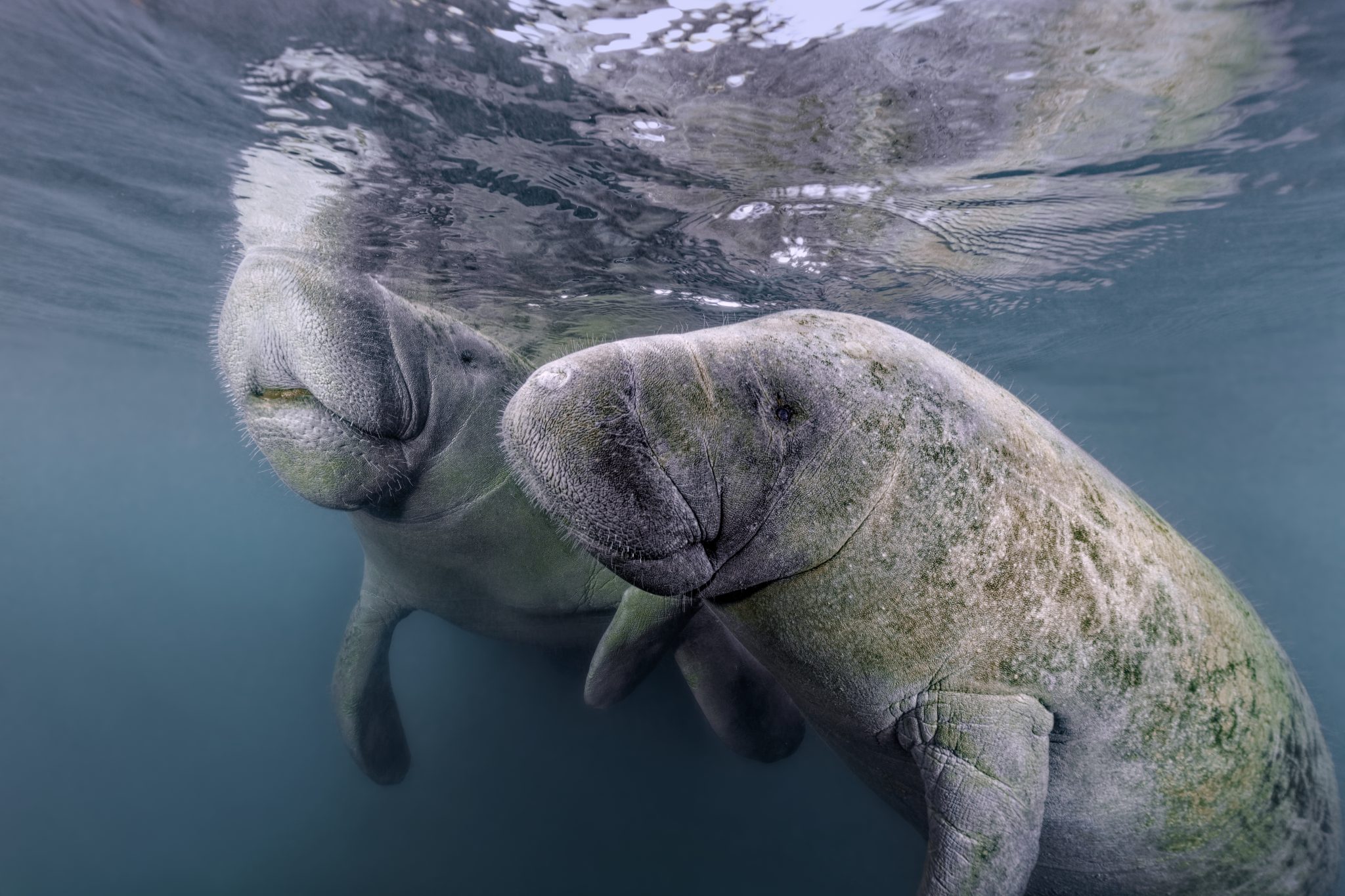
As National Safe Boating Week approaches, Save the Manatee® Club is urging boaters, and anyone that enjoys Florida’s waterways, to respect and protect the defenseless manatees that inhabit our shared waterways. From May 18 to 24, leading up to Memorial Day Weekend, the campaign aims to raise awareness about recreational boating safety and the importance of safeguarding imperiled manatees during the summer boating season. This week also emphasizes the importance of encouraging boaters to enroll in a boating safety course.
Manatees are semi-migratory marine mammals that are commonly found in shallow estuaries, bays, rivers, canals, and coastal areas throughout Florida and neighboring states. With some manatees venturing as far west as Texas and as far north as Massachusetts, collisions between these gentle giants and watercraft have become distressingly frequent. Boat propellers and high-speed collisions pose significant threats to manatees, often resulting in severe injuries or even death.
Save the Manatee Club is calling on all water enthusiasts to follow essential manatee safety tips to ensure the well-being of the imperiled manatee:
- Obey Speed Zone Signs: Familiarize yourself with and adhere to posted speed limits to prevent collisions with manatees.
- Reduce Glare with Polarized Sunglasses: Wear polarized sunglasses to enhance visibility and spot manatees below the water’s surface.
- Recognize Manatee Signs: Learn to identify signs of manatees in the area, such as swirls or flat spots on the water caused by their movements.
- Respect Manatee Sanctuaries: Keep a safe distance from posted manatee sanctuaries and avoid pursuing or harassing these marine mammals, as it is illegal and can disrupt their natural behaviors.
- Report Distressed Manatees: In Florida, promptly report distressed, injured, tagged, or orphaned manatees to the Florida Fish and Wildlife Conservation Commission (FWC) at 1-888-404-FWCC (3922). Outside of Florida, report sightings to the appropriate state agency or rescue organization. A list of agencies to contact is available at savethemanatee.org/report.
- Protect Seagrass Beds: Avoid boating over seagrass beds and shallow areas where manatees may be feeding. Stick to deep water channels while remaining vigilant, as manatees also utilize these channels during their travels.
- Dispose of Fishing Line Responsibly: Anglers should properly dispose of or recycle used fishing line to prevent entanglement hazards for manatees.
“Each year, National Safe Boating Week provides an excellent reminder for all of us to be aware that we share our waterways with vulnerable manatees,” emphasized Patrick Rose, Aquatic Biologist and Executive Director of Save the Manatee Club. “With the recent Unusual Mortality Event on Florida’s East Coast claiming an alarming number of manatees’ lives, it is more crucial than ever to prevent preventable deaths caused by watercraft collisions. By following manatee-safe boating guidelines, such as obeying speed zones and remaining vigilant for manatees, everyone on the water can contribute to the protection of these gentle giants.”
Save the Manatee Club offers a range of free materials to help safeguard manatees and raise awareness about manatee-safe boating practices. Shoreline property owners and park or marina managers can order aluminum dock signs to alert others about the presence of manatees in their areas. Boaters and paddlers can request packets containing a safety tips card, a waterproof boat banner, and a decal to display on their vessels, providing the number to report manatees in distress. To view and request these materials, visit savethemanatee.org/resources. Save the Manatee Club will also be hosting a live webinar for National Safe Boating Week on Tuesday, May 21st at 6pm EST. To register, visit savethemanatee.org/register.
Marine Life & Conservation Blogs
Book Review: Shells of the World

Shells of the World: A Natural History by M.G. Harasewych
Shells of the world is a guide to the world of marine, shelled molluscs. And what a varied and interesting world it is. Some of my favourite things to find on a dive are detailed in this book, including disco clams (or Electric File Clams as they are correctly names), the cephalopods, giant clams and sea hares. There are also many on my wish list, top of which is the Nautilus.
Each chapter provides a detailed description of the species, along with beautiful images. You can dive deeper and discover where they live, both with global distribution and the habitat they prefer. Learn about their diet, reproduction and diversity.
Having dipped in and out of this lovely book over the past few weeks, it has inspired me to learn more about this group of animals that we see on most divers, wherever we are in the world. Some of the shells are incredibly intricate and beautiful. I have always agreed with never collecting, or touching, marine life. The description of a certain set of cone shells should be a warning to those that are happy to pick up marine life! One of the cone shells has a local name called the cigarette snail. Why? Because once the venom is in your system from this animal, you only have time to smoke one cigarette before the affects of the venom are fatal!
What the publisher says:
Mollusks are invertebrate animals with a remarkable natural history and a rich fossil record, and their shells are prized for their breathtaking variety and exquisite beauty. Shells of the World provides a wide-ranging look at the incredible diversity of marine mollusks. An informative introduction outlines the lineages covered, followed by a directory section, split into classes, that profiles a broad selection of different taxa to give a sense of their sheer numbers and variety.
- Features hundreds of beautiful color photos, depicting both the live animals and their shells
- Discusses mollusk evolution, anatomy, life cycles, behavior, and ecology
- Describes unique characteristics, distribution, habitat, and size
- Provides valuable insights into the conservation of the world’s marine mollusks
- Ideal for malacologists and shell collectors everywhere
About the Author:
M. G. Harasewych is research zoologist emeritus and former curator in the Department of Invertebrate Zoology at the Smithsonian Institution’s National Museum of Natural History. A fellow of the American Association for the Advancement of Science, he is the author (with Fabio Moretzsohn) of The Book of Shells: A Life-Size Guide to Identifying and Classifying Six Hundred Seashells.
Book Details
Publisher: Princeton University Press
Hardcover
Price: £25
ISBN: 9780691248271
Published: 9th April, 2024
-

 Marine Life & Conservation Blogs3 months ago
Marine Life & Conservation Blogs3 months agoCreature Feature: Swell Sharks
-

 Gear Reviews4 weeks ago
Gear Reviews4 weeks agoGEAR REVIEW – Revolutionising Diving Comfort: The Sharkskin T2 Chillproof Suit
-

 Blogs2 months ago
Blogs2 months agoMurex Resorts: Passport to Paradise!
-

 Blogs3 months ago
Blogs3 months agoDiver Discovering Whale Skeletons Beneath Ice Judged World’s Best Underwater Photograph
-

 News3 months ago
News3 months agoPADI Teams Up with Wellness Brand Neuro to Drive Ocean Change and Create a Blue State of Mind
-

 Gear Reviews3 months ago
Gear Reviews3 months agoGear Review: Oceanic+ Dive Housing for iPhone
-

 Marine Life & Conservation2 months ago
Marine Life & Conservation2 months agoSave the Manatee Club launches brand new webcams at Silver Springs State Park, Florida
-

 Blogs2 months ago
Blogs2 months agoSeagrass Awareness Month brings critical food source for Manatees to centre stage


